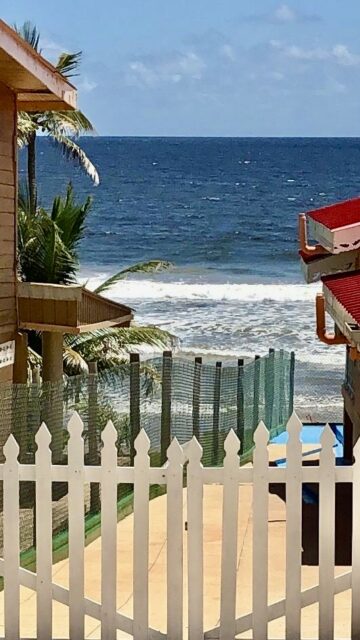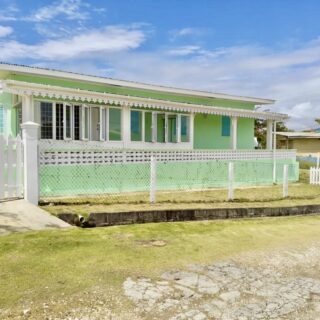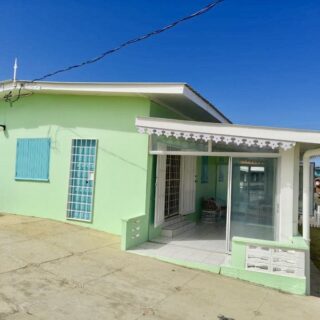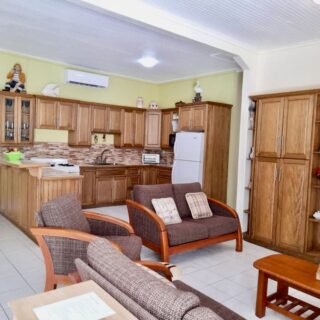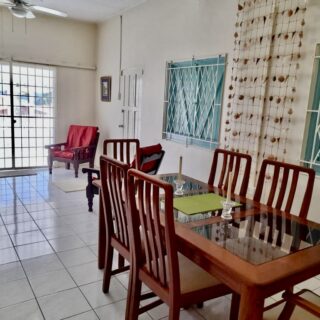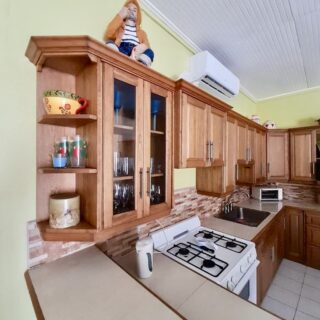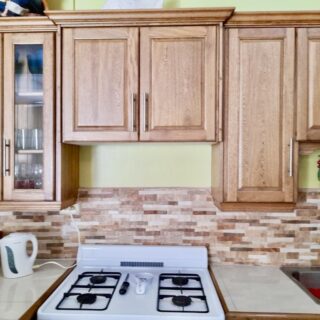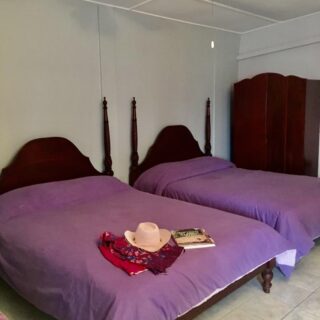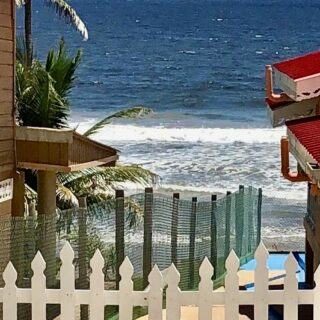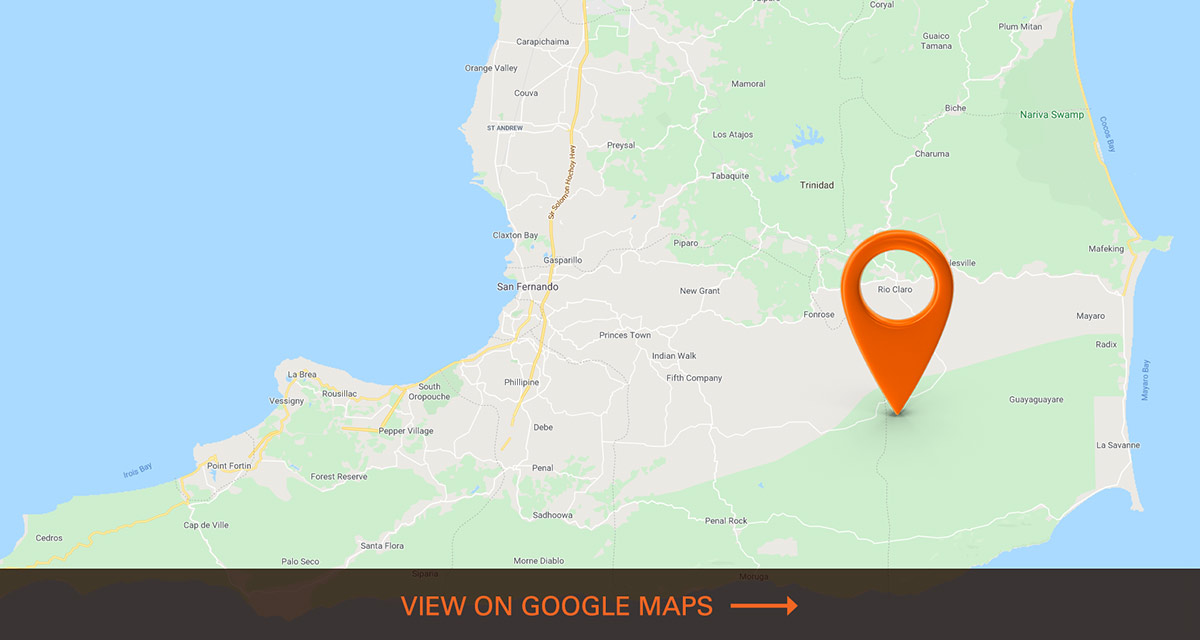About this Property
SAND SUCKER ROAD, MAYARO @ $1.75M Neg.
- Freehold Land: 5,782 sq ft with Sea views and a short stroll to the Beach.
- 4 Bedrooms.
- 3.5 Bathrooms.
- Open concept Living, Dining and Kitchen.
- Kitchen made of Appamat hard wood, Modern with sliding pot shelves and stainless steel hardware. (Appamat is the wood derived from the Pink Poui tree. It is hard as Oak but not as hard as Teak).
- 4 Modern Air Condition split system units.
- Front porch is partially covered with fiber-glass windows .
- Sundeck at the side of property.
- Utility room which includes: Water pump , Water heater and Electrical outlet for Stackable Washer and Dryer (Stackable not included) .
- 3 Large water tanks.
- Outdoor shower.
- Paved driveway accommodating 4 vehicles.
- Proper drainage surrounds property.
- Fully fenced.
- Electrical wiring professionally assessed and in good state.
This Property is being sold Fully Furnished and Equipped and includes:
- Fridge, Gas stove with Oven & Grill, Toaster oven, Kettle, Microwave, Pots, Pans and Dishware.
- 3 Double beds and 3 Queen beds – All commissioned & custom made of Mahogany hard wood.
About the Region
Guayaguayare
Guayaguayare is the most south eastern village in Trinidad and Tobago. It lies at the southern end of the county of Mayaro. Guayaguayare (often simply called Guaya) is primarily a fishing village, but it also plays a major role in the petroleum industry. The largest petroleum producers in the country - BP Trinidad & Tobago (bpTT), BHP Billiton and Petrotrin all have a major presence here.
Guayaguayare was the first area in Trinidad sighted by Christopher Columbus on July 31, 1498. The area along Guayaguayare Bay, between the Lizard River (originally Rio de Iguanas) and the Pilote River (Rio de Pilotas) was settled by French planters and their slaves in the late eighteenth century following the 1783 Cedula de Población.
Guayaguayare also has a prominent place in the history of the oil industry - it was the site of the first commercially viable wells drilled in Trinidad by Randolph Rust and Lee Lum in May 1902.
It is the birthplace of Jillian Richardson who won a silver medal for Canada at the 1984 Olympics in the 4x400 metres.
View More Guayaguayare Listings
Mayaro
Mayaro is a town on the island of Trinidad in Trinidad and Tobago. Known as a fishing village, many vendors travel from all over to purchase the catch. Mayaro has developed into a well-known residential area where schools, health centres, police stations are all accessible. Most small business owners are residence and they thrive from many persons who are just passing through to enjoy the beaches available for bathing, relaxing etc.
There are resorts that has significantly developed and many Trinidadians as well as tourists book these rooms especially around the Carnival and Easter season.
Mayaro has a market, bus terminal, ATM’s Banking services, police and fire stations and many bars.
Mayaro is also associated with the oil production - most of Trinidad's oil and natural gas production comes from offshore oil fields to the east of Mayaro. The major producer is BP Trinidad & Tobago (bpTT), together with BHP.
Rio Claro
Rio Claro is the largest town in southeastern Trinidad, in Trinidad and Tobago. Rio Claro lies east of Princes Town, west of Mayaro and northwest of Guayaguayare. It serves as the major commercial centre for southeastern Trinidad. It lies in a primarily agricultural area. It is the seat of the Rio Claro–Mayaro Regional Corporation.
Rio Claro currently has two secondary schools and nine primary schools.
The area is well known for its extensive yet accessible forests. The early lumber industry (circa 1930's) left many small trails, some of which were eventually paved over. This infrastructure development enabled not only the local farming populace but many avid hunters and fishermen access to these areas.
Well into the 21st century the area is known throughout Trinidad as having exceptionally fruitful hunting (small game animals such as agouti, lappe and armadillo) and fishing grounds.
For many years the Rio Claro area sustained a profitable trade in Caribbean tropical hardwoods.

